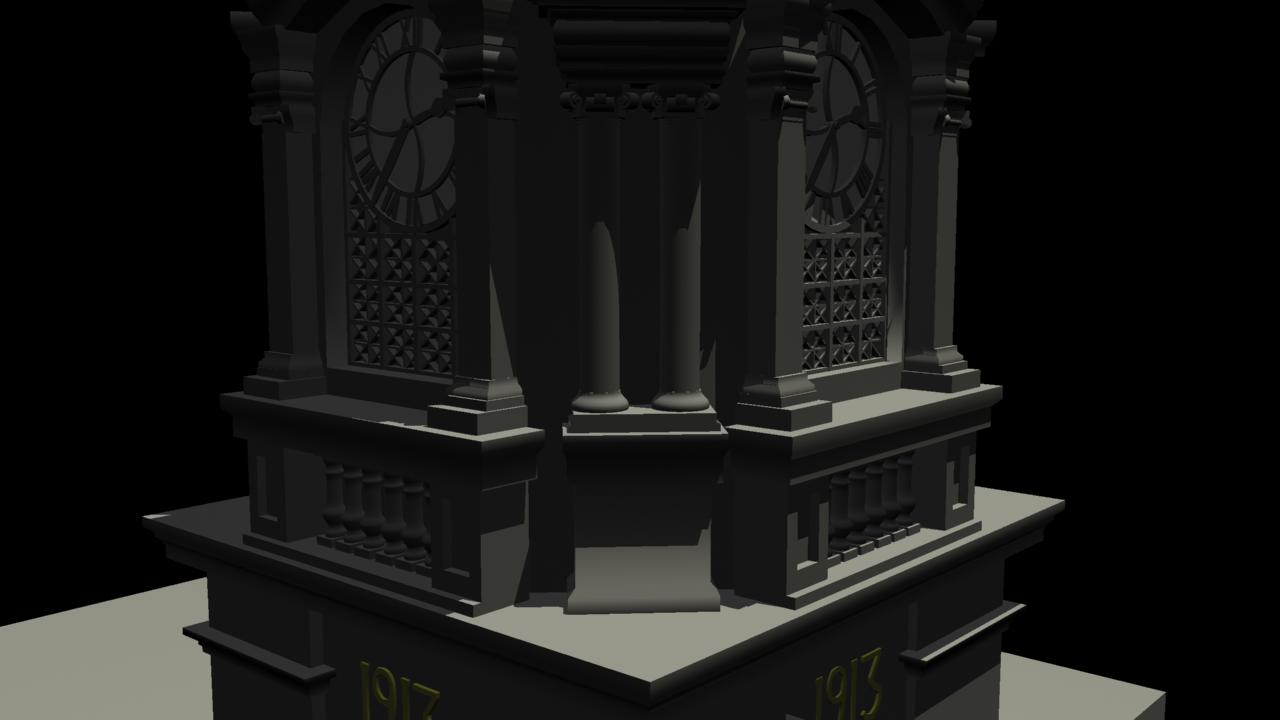
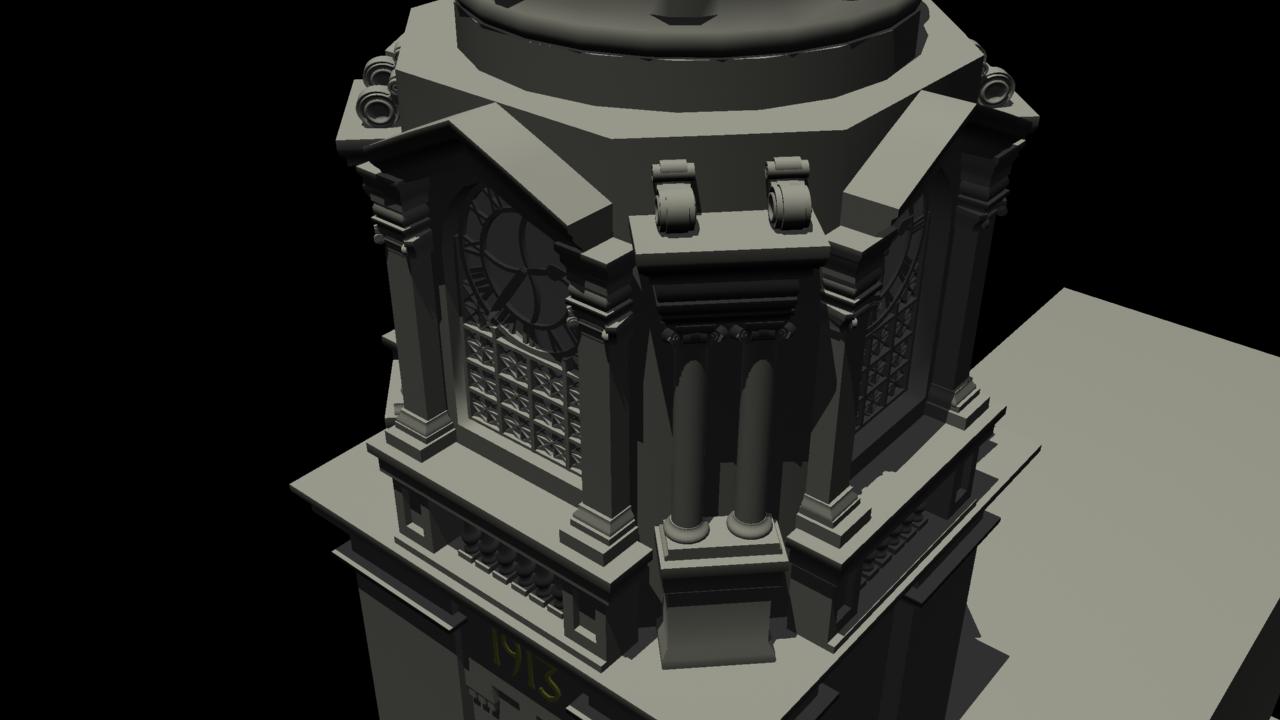
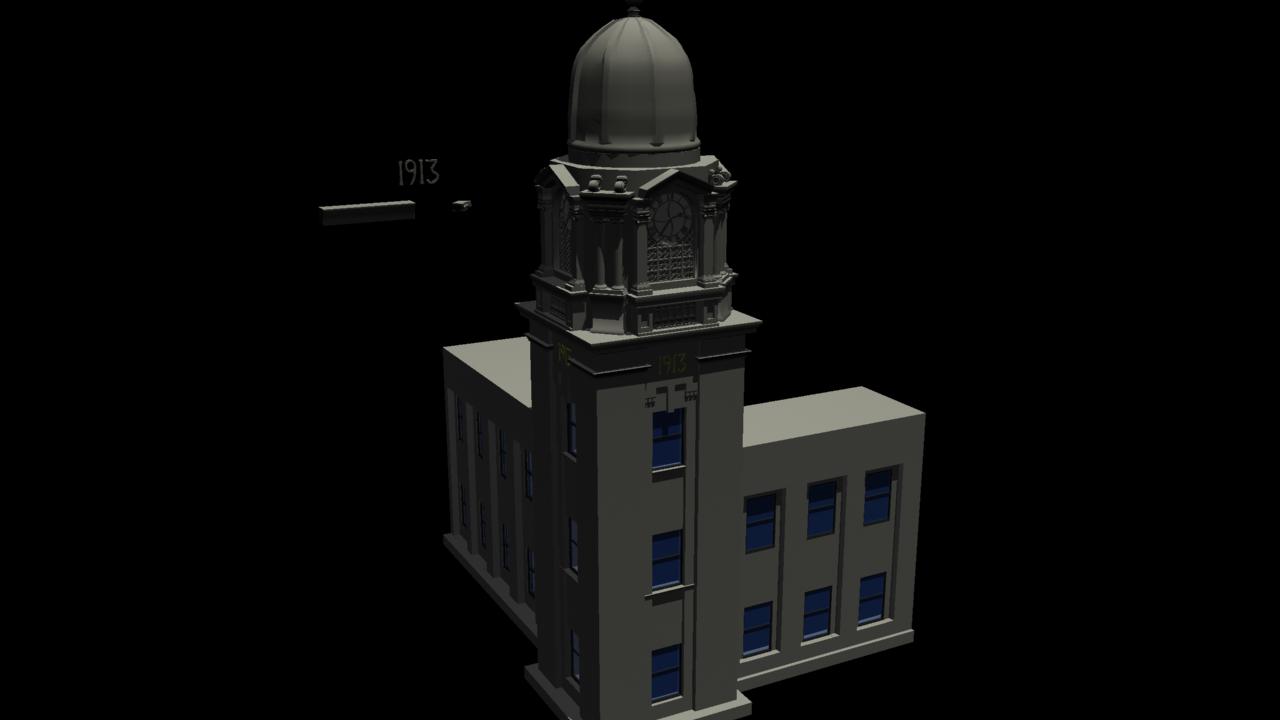
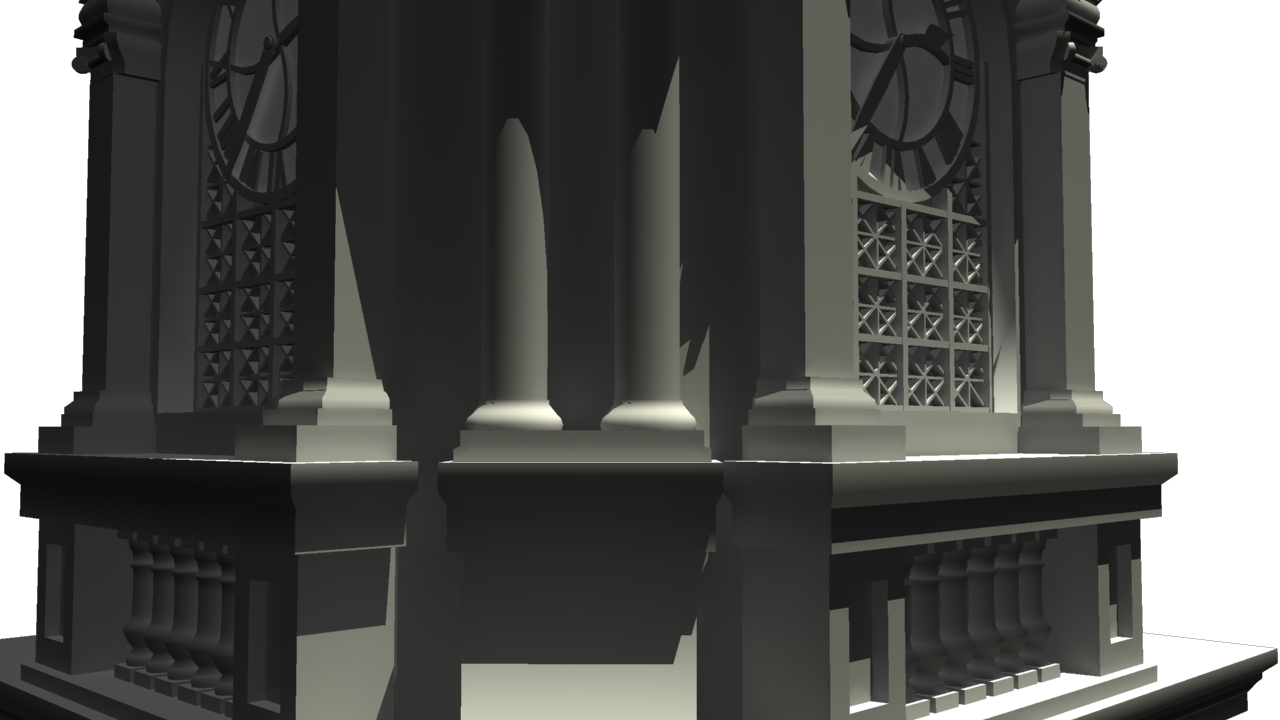
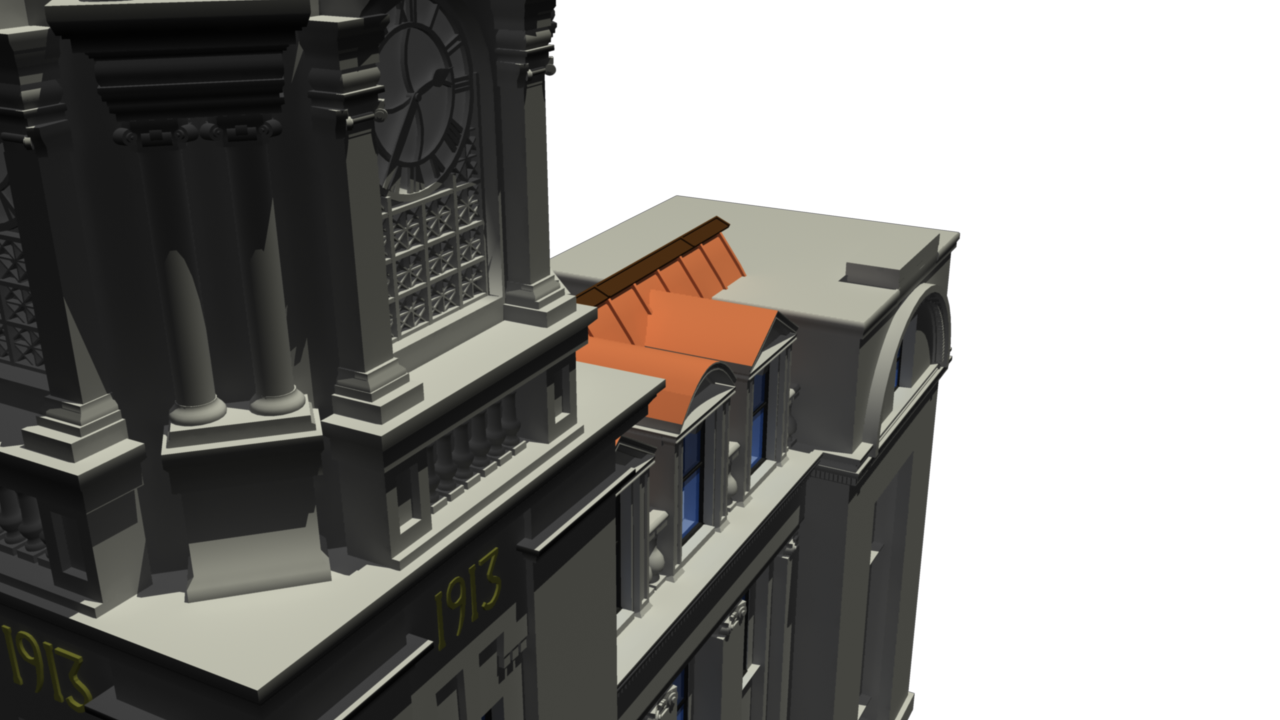
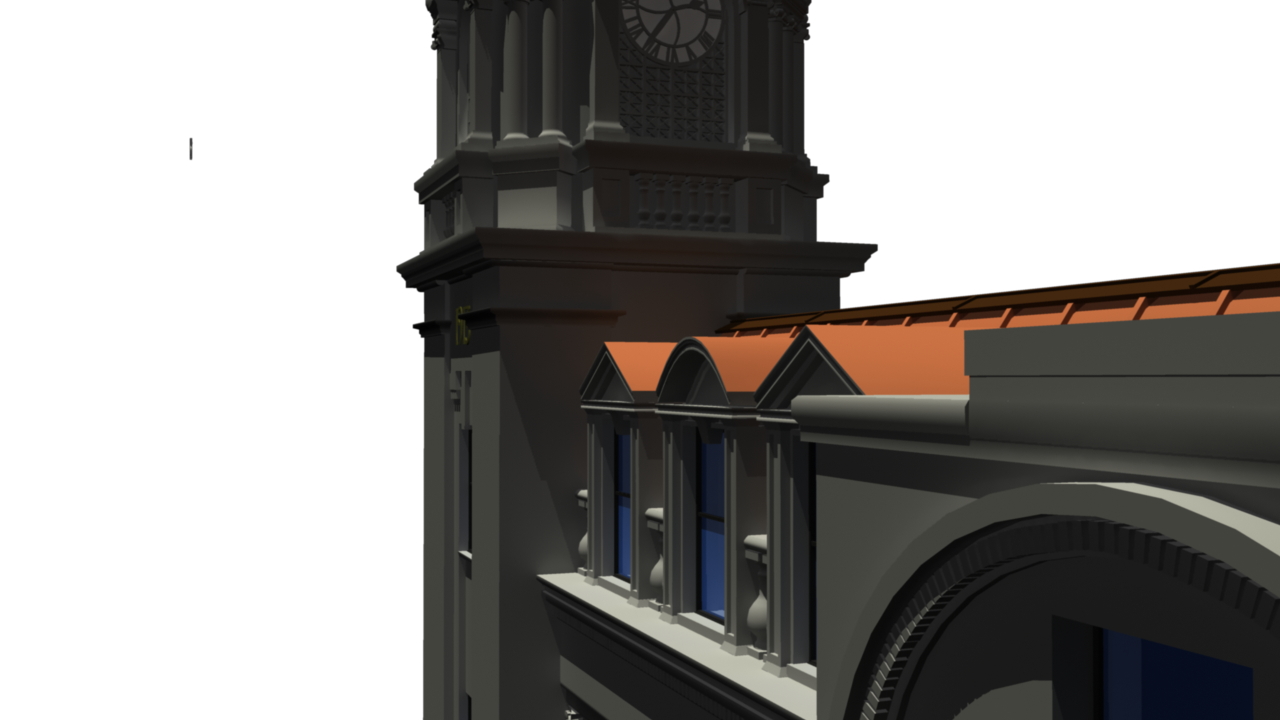
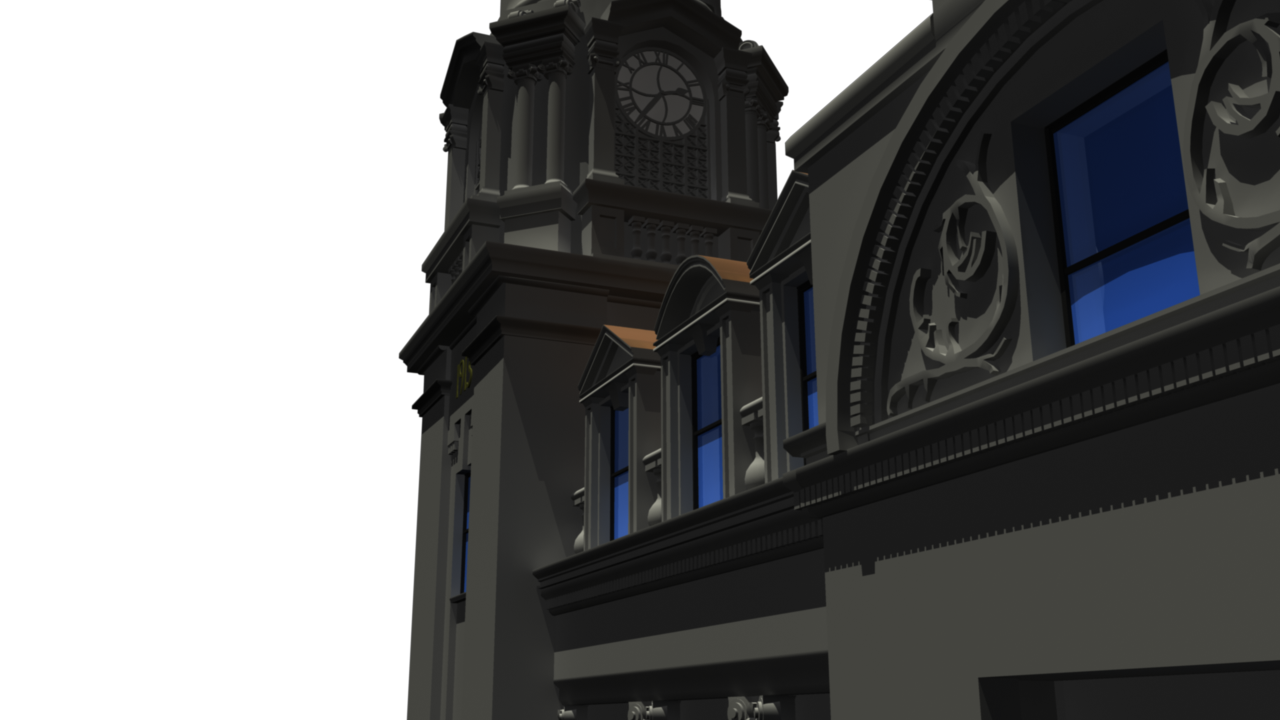
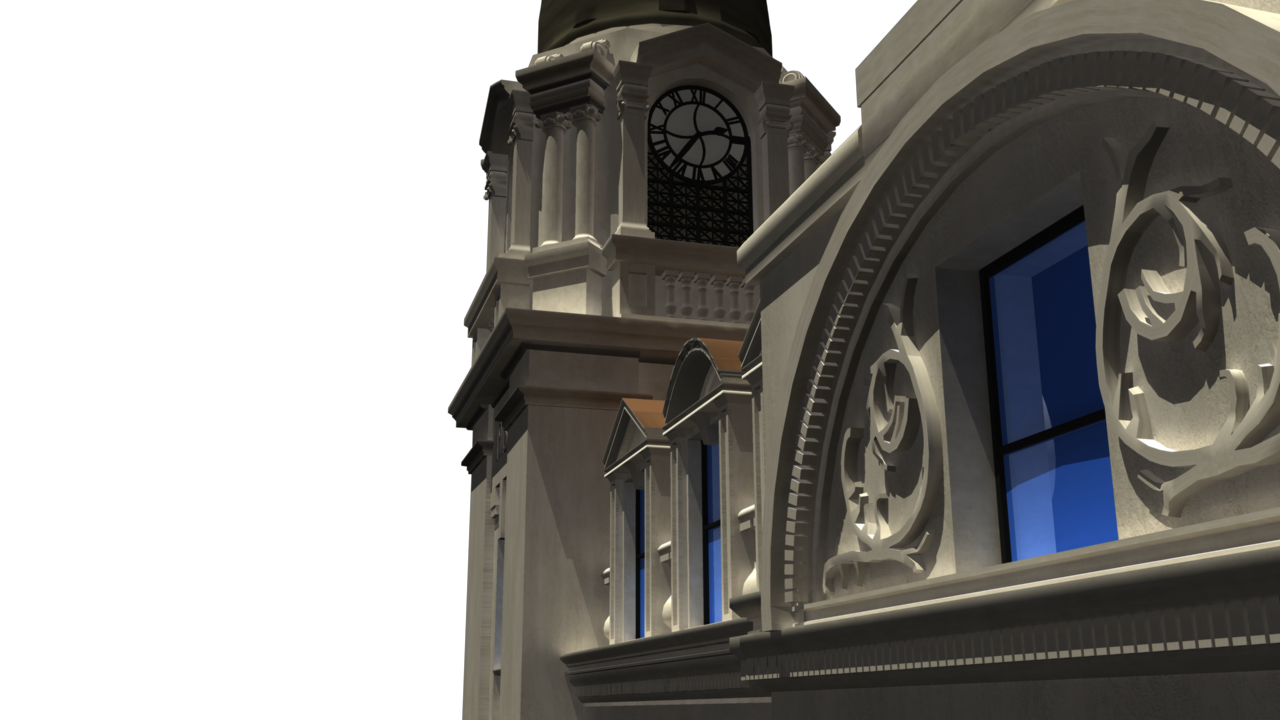
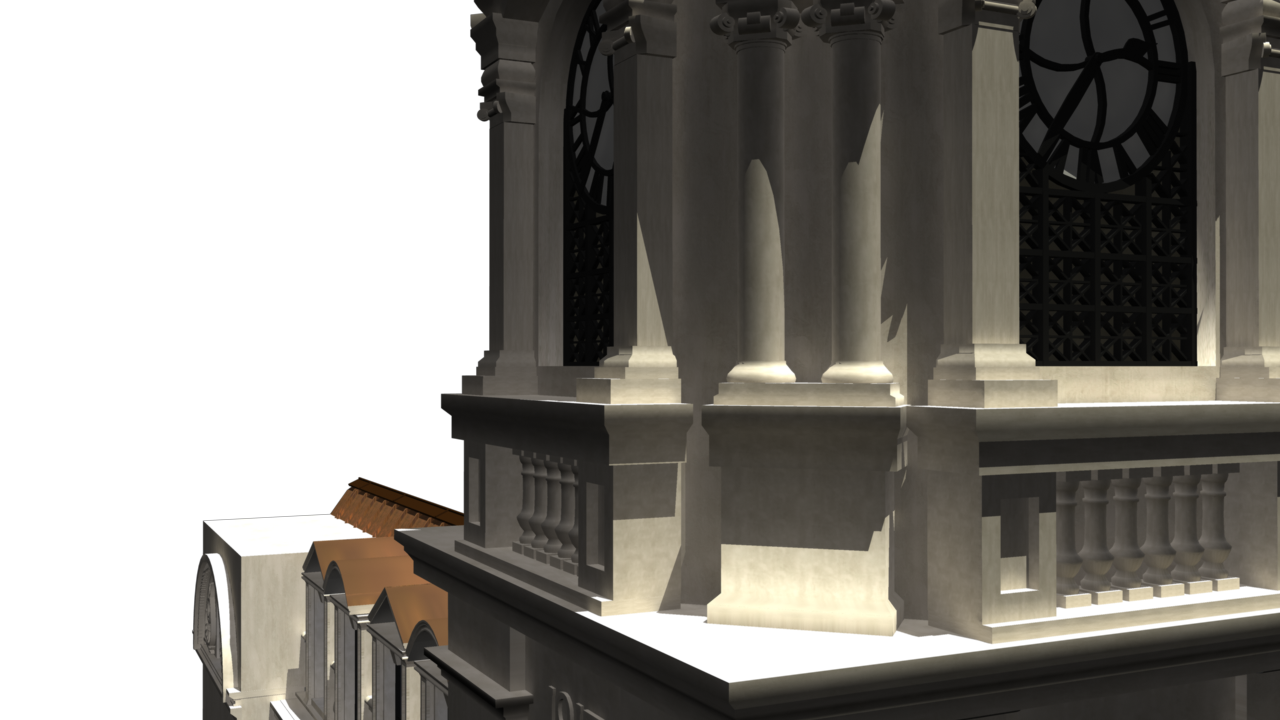
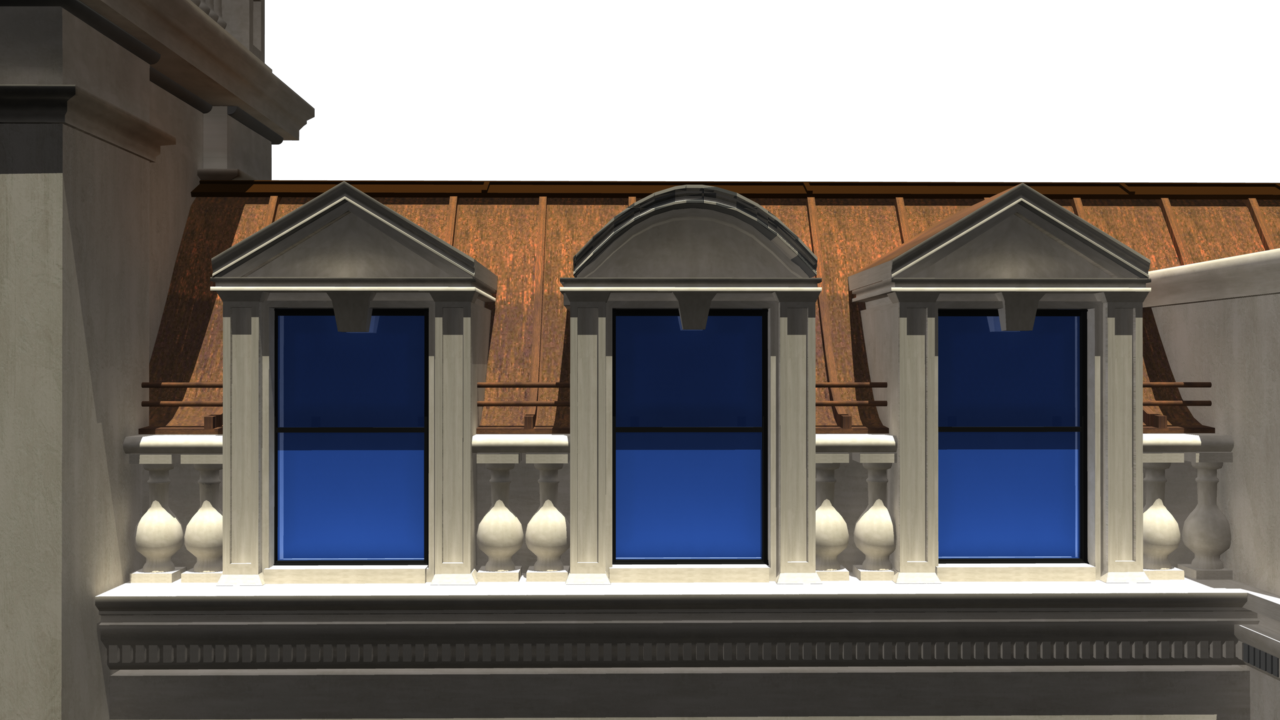
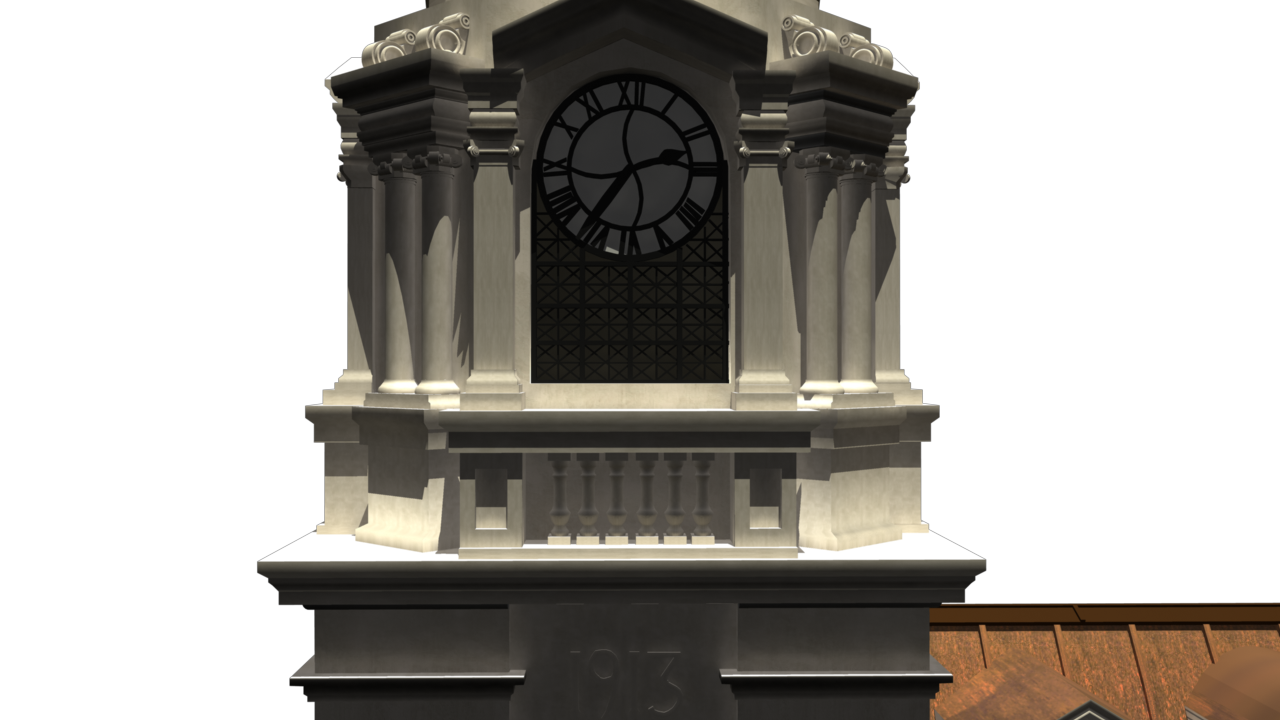
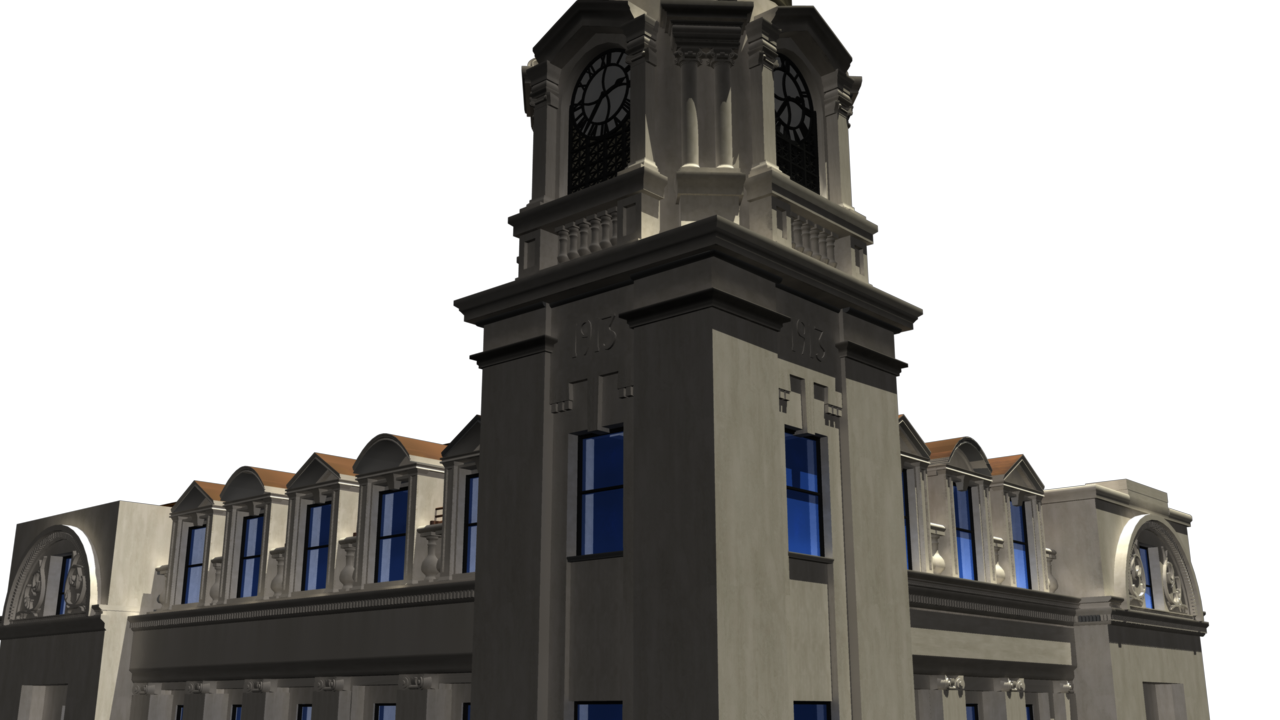
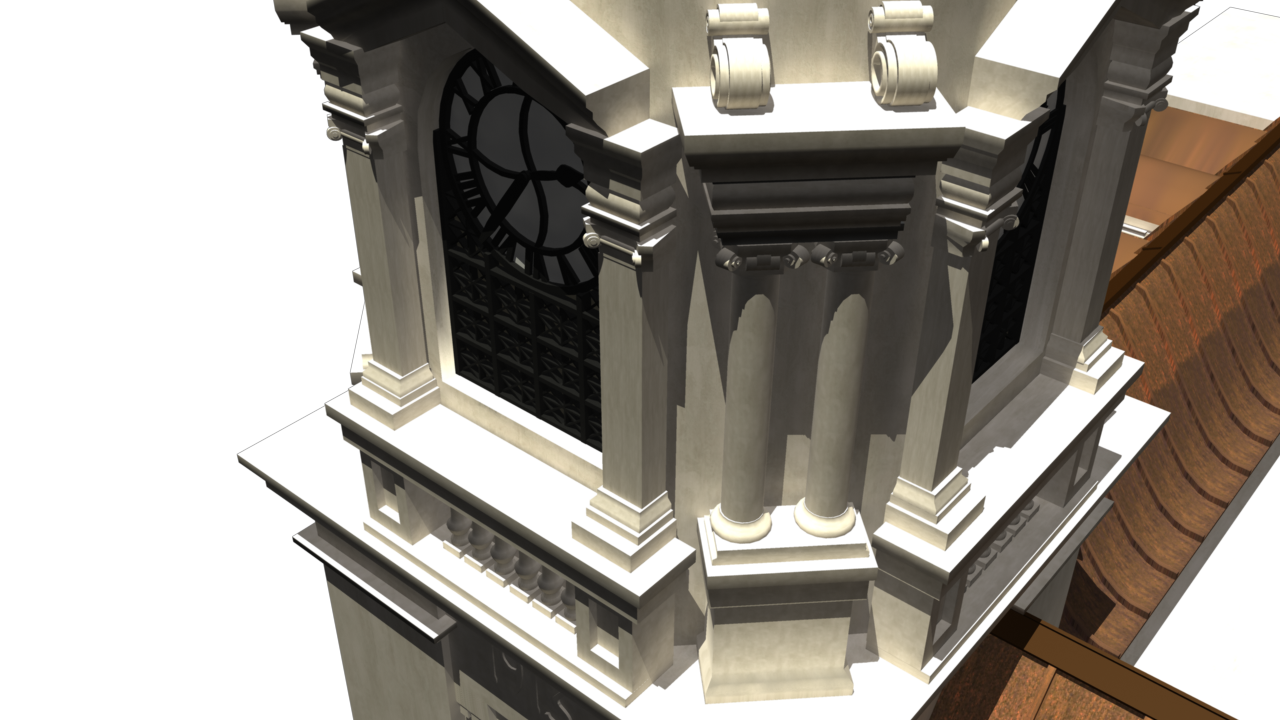
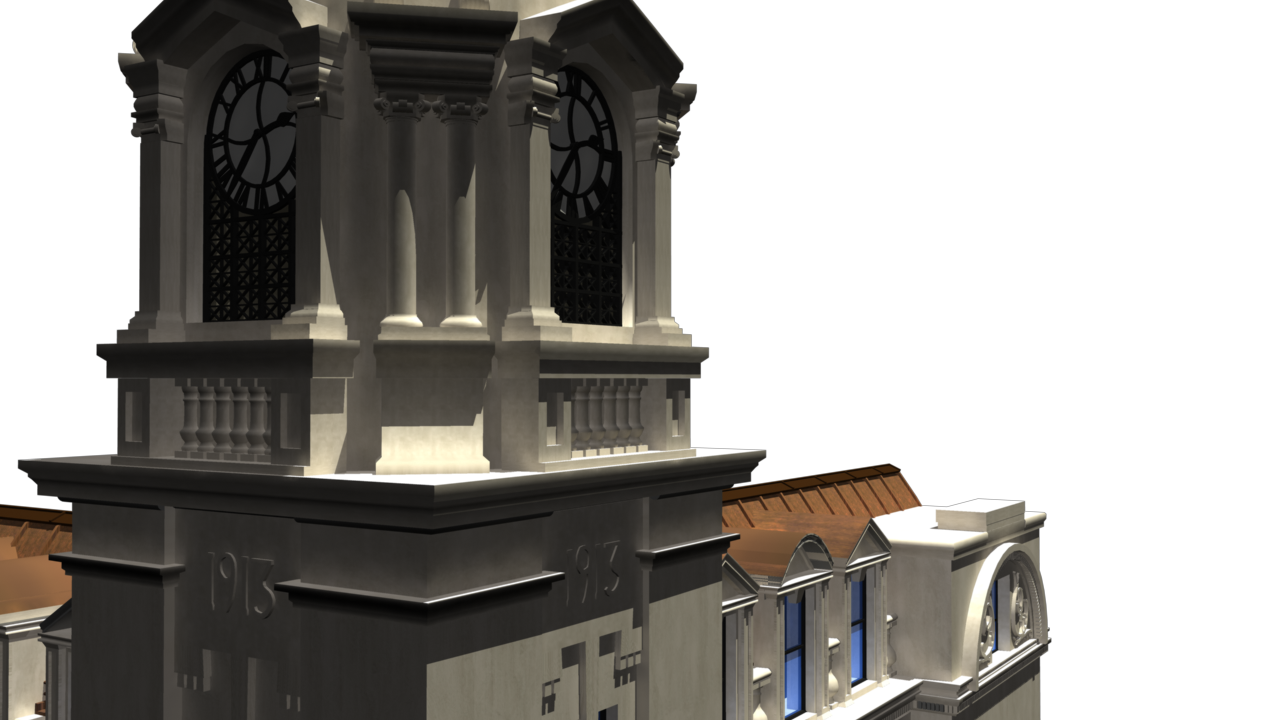
CPSC3710
Joel Bennett
February 13th, 2007
I'll take the Mug, thanks.
(I heard the prize for the last few years has either been a hat or a mug. I'll take the mug. Or, if the prize is something bigger this year, I'll take that instead. I could use a small gift certificate for Future Shop...).
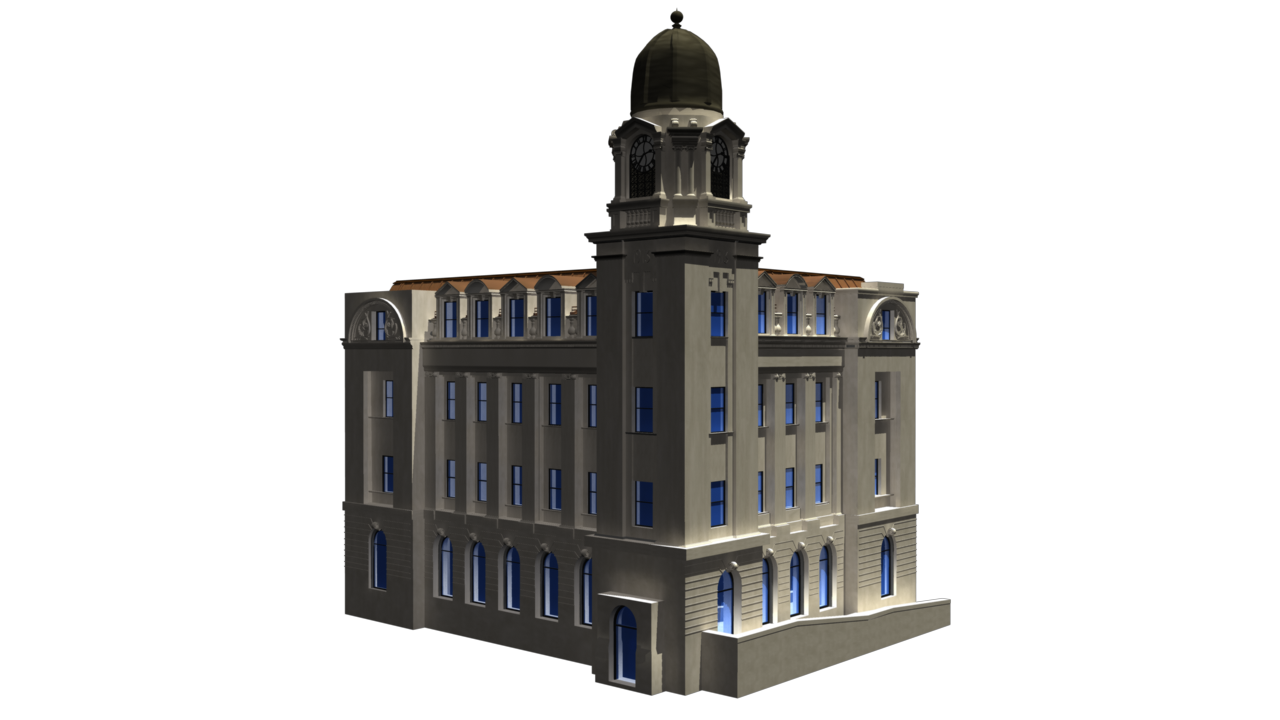



Modelled and textured in Maya 8.5. Textures were generated using a program called Genetica Viewer (a texture generation tool). The final renders on the higher quality frames took upwards of 20 minutes a piece. still not too long, but long enough. That, and Maya kept screwing up on my "custom" render settings. I guess it couldn't handle it or something. The total poly count was 217,842 triangles, or 1,137,707 vertices. I kid you not!.
I started on the project shortly after we got it. As you may hazard a guess, I spent quite a few hours on it. I really have no idea how many hours in total, as I never kept track. If I had to take a guess, I'd say around 20 hours, maybe upwards of 30. So yeah, it's taken a while to get where I'm at. Sad thing is, I'm still not totally satisfied with the model and texturing, although I am getting pretty sick of working on the dang thing.
The source images I used for the model came from online, as well as a former roommate who happens to have a side-business doing stock photography. He happened to have some nice high-resolution images which he kindly let me use. So yeah, those nice, high resolution images are copyrighted to Kris Butler. You want to use them? Talk to him first. The other images were yanked from Google Images, and are copyrighted to their respective owners.
Click here to see the source images
I had a chance to take the 3D Modelling class last semster, and we used Maya 8.5. I'd say I can find my way around Maya pretty well, so having those sorts of skills definitely came in handy. That, and I've been working with 3D stuff for quite a while, so I have no problems visualizing things in 3D.
I also happened to have stumbled across a small program called Genetica Viewer, while pursuing my own projects. It happens to be incredibly good at generating seamless procedural textures. This is where I got the rusty roof and sandstone texture (which were distributed with Genetica). I did end up running the sandstone texture through photoshop to make it look a bit less pink. When I did my first attempt at texturing the whole building looked a bit like a giant block of spam. Toning down the red in the texture helped that somewhat, although it does look a bit less true to the original.

There were most certainly a few things that went wrong. For one, as previously mentioned, Maya kept dying during my final renders. What really stunk is waiting a good 20 minutes only to find out the rendering has stalled somewhere half way through. I blame Final Gather for this (a component of Maya).
I'm not very good at texturing. The geometry of the model itself is pretty amazing, but the textures don't really do it justice. I was able to make up for my lack of texturing skills a little bit by adding more geometry, but it really would have looked a ton better if it was properly textured. This would include some nice bump or parallax mapping, but alas, I only had so much time.

By looking between the source images and the final renders you can definitely notice a few things that are "off". The biggest is probably the number of panels of latticework below the clock face. The original has 3 major panel columns while my model has 4. I also did a pretty shoddy job of the cone-shaped part on the top. It was one of the first things I modelled, and I never did get around to fixing it. That, and the spacing and number of pillars between the set of windows on the top floor (non-clocktower part). I just eyeballed the whole thing.
There really isn't any environment surrounding the post office. This accounts of the lack of reflections of other stuff on the windows (the windows themselves do reflect the building, though). If I really felt up to it, I would have done some spiffy cube mapped windows that reflect the non-existant sky. Again, there's only so much that one man can do...
Also, the actual red post-office sign is missing. I didn't take the time to get a texture of the real thing, so I just left it off altogether.
You may also notice some crappy-looking scrollwork surrounding the windows on the ends of the building on the top floor (within the semicircle of brickword, which, might I add, is all geometry, not parallax mapped). This was more or less done by starting with a box, subdividing it, extruding it, moving the extruded parts, extrude it again... and so on. Somewhere in the process the normals got screwed up a bit. It doesnt' look much like the original, but at least it adds more detail to that part of the building that is otherwise bare.
I also found that Maya had some trouble working with some of the fine details when I was trying to do the grout lines on the bottom floor near the front door. Normally you can do a binary operation to give you the intersection of the geometry, which would cut out the grout lines. Maya again was wigging out on me, so eventually I just settled to have the grout lines stick out. The end result looks okay, until you get up close...
I'm also only so-so satisfied with the lighting. The global illumination really does make things look amazing, except in some areas where things shouldn't be so light, for example behind the pillars on the clock tower. Perhaps I should have done an ambient occlusion pass first...
I also just noticed that I'm missing a block on the one end of the building. The side with the ramp has one (a squarish block above the top window furthest from the clock tower), but the other side doesn't have one. Also, for some reason the geometry around the top of the clock face (the overhanging bits) are darker than they should be. I suspect screwed up normals.
Take a real close look at the Roman Numerals on the face of the clock. Notice something funny about the number "4"? I did. It looks like the progenetors of the clock tower either didn't know their Roman Numerals or did it for some other reason oblivious to the rest of us. Of course, keeping with the historical inaccuracies, I modelled it true to the original.

Here's a series of screenshots showing the construction phase, and some renders done part way through at various render qualities. I spent way too much time on the clock-tower part...















Property of Joel Bennett, Copyright 2008. Do not use without permission. joel [dot] bennett [at] gamedev [dot] net